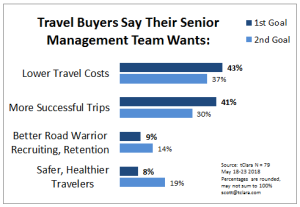
I’ve yet to see a credible and scalable approach to estimating a business trip’s return on investment (ROI). So how do we know if a business trip should be taken?
Seems it’s always been a matter of judgment, a subjective call made with (usually) the best of intentions. Some trips are clearly justified; others are cloudier.
Today, it’s more important than ever to get these travel decisions right. We’re looking at tighter travel budgets, more acceptance of the virtual meeting, and greater concerns about the climate. We’re also keen to build the trust and relationship equity that’s deteriorated over the last two and a half years.
Here are seven questions to judge the merits of taking most any business trip. Answer any question with a “No” means you should skip the trip. Give each a “Yes”, and off you go with a clear conscience and a clearly justified trip.
- Is it clearly better to do this trip’s mission in person than by a virtual meeting?
- Are this trip’s risks to the traveler’s health, safety, and well-being acceptable to them and their employer?
- Will this trip’s impact on the climate be sufficiently mitigated?
- Will this trip’s success clearly help achieve an important goal?
- Will the traveler have one clearly value-adding role on this trip?
- Have specific goals or success criteria been established for this trip?
- Does the traveler expect to get a reasonably good return on the trip’s cost and their time?
Sure, your list of questions may be different, but it should cover all the issues raised above – the benefits of meeting in person, health and safety considerations, climate impact, criteria for success, and the prospect of a good ROI – even if we can’t measure it.
Join the discussion about this checklist here on LinkedIn, or drop some comments below.



















